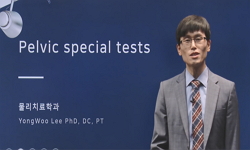Background: Basal cell carcinoma (BCC) is the most com-mon form of skin cancer and possesses various clinical features including translucency, ulceration, pigmentation, telangiectasia, and rolled borders. Accordingly, many cutaneous lesions can mimic ...
http://chineseinput.net/에서 pinyin(병음)방식으로 중국어를 변환할 수 있습니다.
변환된 중국어를 복사하여 사용하시면 됩니다.
- 中文 을 입력하시려면 zhongwen을 입력하시고 space를누르시면됩니다.
- 北京 을 입력하시려면 beijing을 입력하시고 space를 누르시면 됩니다.



Basal Cell Carcinoma-Mimicking Lesions in Korean Clinical Settings = Basal Cell Carcinoma-Mimicking Lesions in Korean Clinical Settings
한글로보기https://www.riss.kr/link?id=A100057907
- 저자
- 발행기관
- 학술지명
- 권호사항
-
발행연도
2014
-
작성언어
-
- 주제어
-
KDC
500
-
등재정보
SCIE,SCOPUS,KCI등재
-
자료형태
학술저널
- 발행기관 URL
-
수록면
431-436(6쪽)
- 제공처
- 소장기관
-
0
상세조회 -
0
다운로드
부가정보
다국어 초록 (Multilingual Abstract)
Background: Basal cell carcinoma (BCC) is the most com-mon form of skin cancer and possesses various clinical features including translucency, ulceration, pigmentation, telangiectasia, and rolled borders. Accordingly, many cutaneous lesions can mimic BCCs and differential diagnosis is difficult. Objective: To clarify the differences in clinical characteristics between BCCs and BCC-mimicking lesions (BMLs), and to determine which clinical characteristics are helpful for an accurate clinical diagnosis of BCC. Methods: We performed clinicopathologic analysis of cutaneous lesions that received a clinical diagnosis of BCC. All lesions included in this study showed more than one of the following characteristics of BCCs: translucency, ulceration, flecked pigmentation, black or blue hue, telangiectasia, and rolled borders. We compared six clinical characteristics between the BCC group and the BML group. Results: Among 48 lesions in the BML group, there were 15 premalignant or malignant lesions and 33 benign lesions. Various dermatoses mimicking BCC that have not been reported in the dermatological literature were identified, including angiosarcoma, vulvar intraepithelial neoplasm, foreign body gra-nuloma, intravascular papillary endothelial hyperplasia, sarcoidosis, and others. Compared to the BML group, the BCC group had a significantly higher frequency of translu-cency (76.3% vs. 52.1%, p<0.001), ulceration or erosion (44.2% vs. 27.1%, p=0.022), black or blue hue (40.0% vs. 22.9%, p=0.020), and rolled borders (49.5% vs. 14.6%, p< 0.001). Cutaneous lesions with two or less clinical features of BCC were significantly more likely to be BMLs. Conclusion: The results of this study could be helpful for the differential diagnosis of BCCs and BCC-mimicking cutaneous lesions. (Ann Dermatol 26(4) 431∼436, 2014)
동일학술지(권/호) 다른 논문
-
- 대한피부과학회
- ( Byung Wook Kim )
- 2014
- SCIE,SCOPUS,KCI등재
-
Letters to the Editor : Benzoin Spray: Cause of Allergic Contact Dermatitis due to Its Rosin Content
- 대한피부과학회
- ( Ji Su Han )
- 2014
- SCIE,SCOPUS,KCI등재
-
- 대한피부과학회
- ( Abdolkarim Sheikhi )
- 2014
- SCIE,SCOPUS,KCI등재
-
Letters to the Editor : Use of Emollients in Atopic Dermatitis: A Questionnaire Survey Study
- 대한피부과학회
- ( Ji Hyun Lee )
- 2014
- SCIE,SCOPUS,KCI등재




 KCI
KCI KISS
KISS



